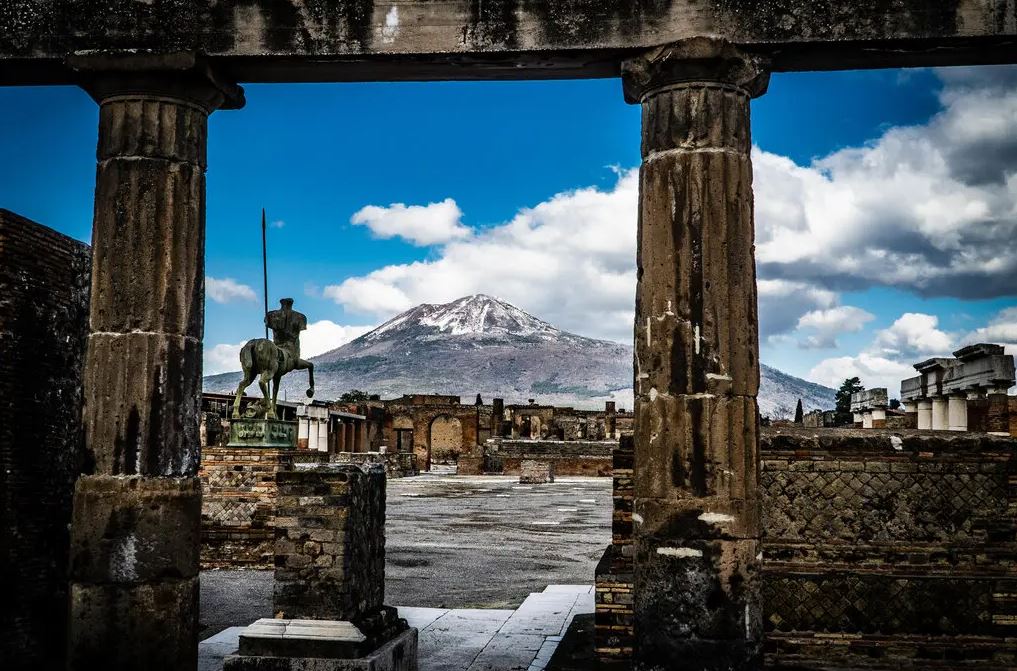The skeleton of a man who perished in the eruption of Mount Vesuvius in the year 79 A.D. was found in Pompeii by researchers in the early 1930s. This finding is considered to be one of the most significant archaeological finds ever discovered. The corpse was discovered encased in pumice and resting on what had been a wooden sofa. His arms were folded beneath his head, and his legs were extended out on the floor. The body was unearthed in the Casa del Fabbro, also known as the House of the Blacksmith.
The figure in its resting position brings to mind the role of Casanova that Marcello Mastroianni performed in the film “Divorce Italian Style,” which was released in 1961. The “sciupafemmine” had a resigned air, tinged by sadness that implied indolence and a lifetime of romantic failure as symbolised by Mastroianni, the ideal Italian man of the 20th century. He is defined as “a lonely, charming, not particularly attractive, but captivating guy who likes being alone nearly as much as he enjoys ladies and their company,” by the Italian actress and writer Marta Mondelli.
It was stated on Thursday in the journal Scientific Reports that a group of geneticists and archaeologists had successfully sequenced the genome of this theoretically slow Latin lover. Dr. Macciardi is a member of the team of researchers that made the announcement. It was the first time that a whole length of mitochondrial DNA from Pompeian human or animal remains has been genetically decoded. The DNA was taken from the ruins of the ancient city of Pompeii.
Gabriele Scorrano, a geneticist at the University of Copenhagen, and Serena Viva, a funerary archaeologist at the University of Salento, are the authors of the paper. They hypothesise that the ash and pumice released during the blast may have provided cover from DNA-degrading environmental factors such as atmospheric oxygen.
The anthropologist Pier Francesco Fabbri came up with the concept for the research in 2017, when he jokedly requested Dr. Macciardi and Dr. Scorrano to assist him in sequencing one of his ancient ancestors, the recumbent man from the Casa del Fabbro. This is where the idea for the project originated.
DNA was retrieved from the bodies of the reclining man and the lady who was found on the floor of the room with her arms wrapped around the edge of a sofa. Scorrano and Serena were the two doctors that performed the procedure. A sack made of fabric lay at her feet, inside of which was a treasury of twenty-six silver pieces.
It is estimated that around 12,000 people lived in Pompeii at the time of the disaster that destroyed the city. The vast majority of individuals managed to get away, and just roughly 1,200 dead have been found so far. A forensic investigation of the two corpses found within Casa del Fabbro determined that the male victim was around 35 years old, while the female victim was over 50 years old. Dr. Macciardi speculated that the woman in question was either his mother, his aunt, or his wife. The researchers focused on the DNA that was deposited in the petrous, which is a very thick bone that surrounds the auditory canal. On the other hand, they were only able to sequence genetic material from the male cadaver.
His genetic make-up was most similar to that of ancient people who lived around Rome during the time of the Imperial era, which corresponds to the first few centuries of the Common Era, according to comparisons of his DNA with genetic material recovered from 1,030 other ancient people and 471 modern people from western Eurasia.
The researchers came to the conclusion that some of the Pompeii man’s ancestors originated on the island of Sardinia, while others originated in Anatolia, which is located in the Asian region of current Turkey. This lends credence to the findings of a previous study, which suggested that the Italian peninsula was a fertile breeding ground for genetic variety around 2,000 years ago.
What reason may there be for the Pompeian male to be laying down? The analysis of his DNA revealed that he suffers from tuberculous spondylitis, commonly known as Pott’s disease. This condition affects the spine. Back discomfort, weakness in the lower limbs, and paraplegia are some of the most common symptoms.

